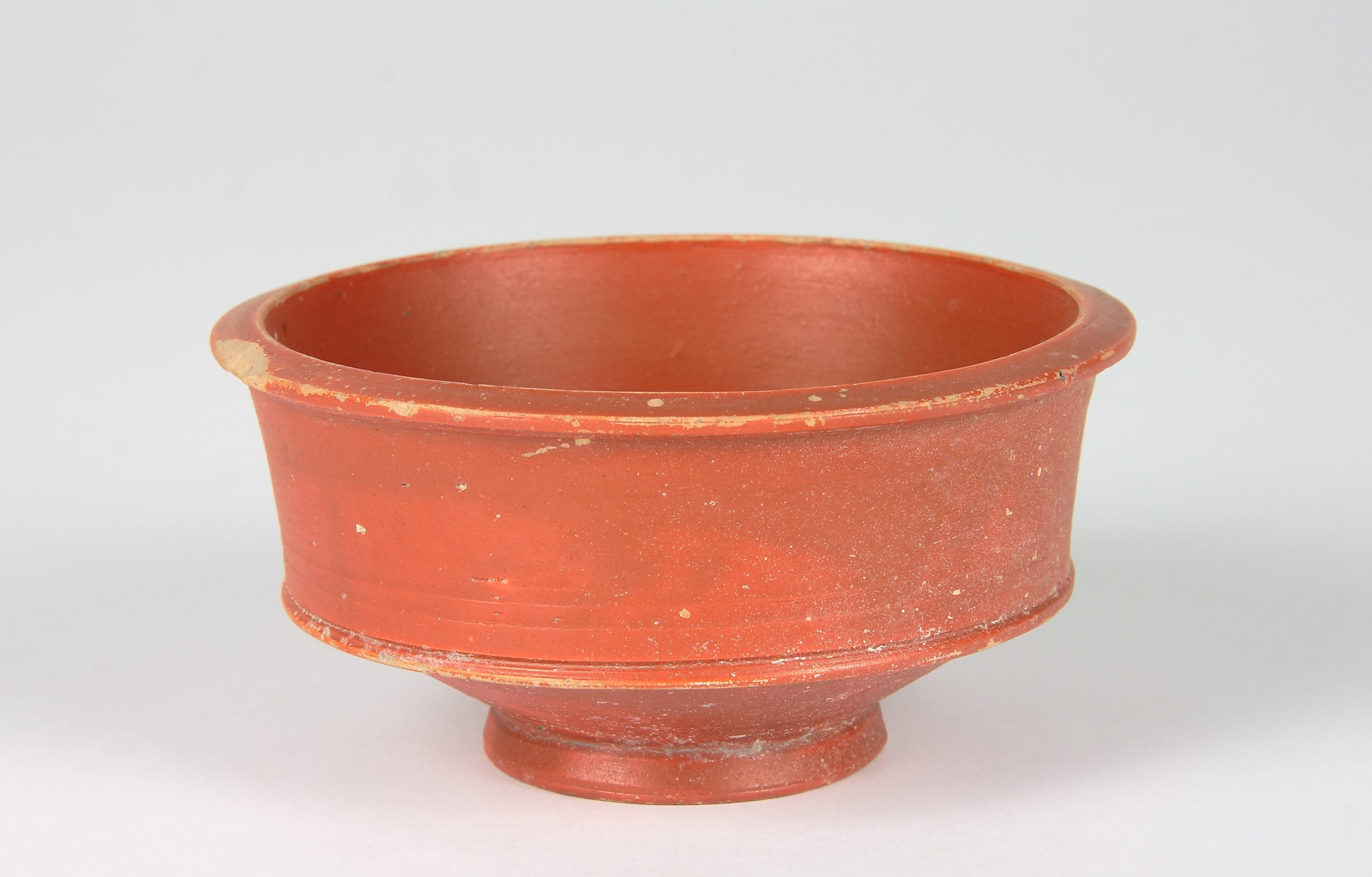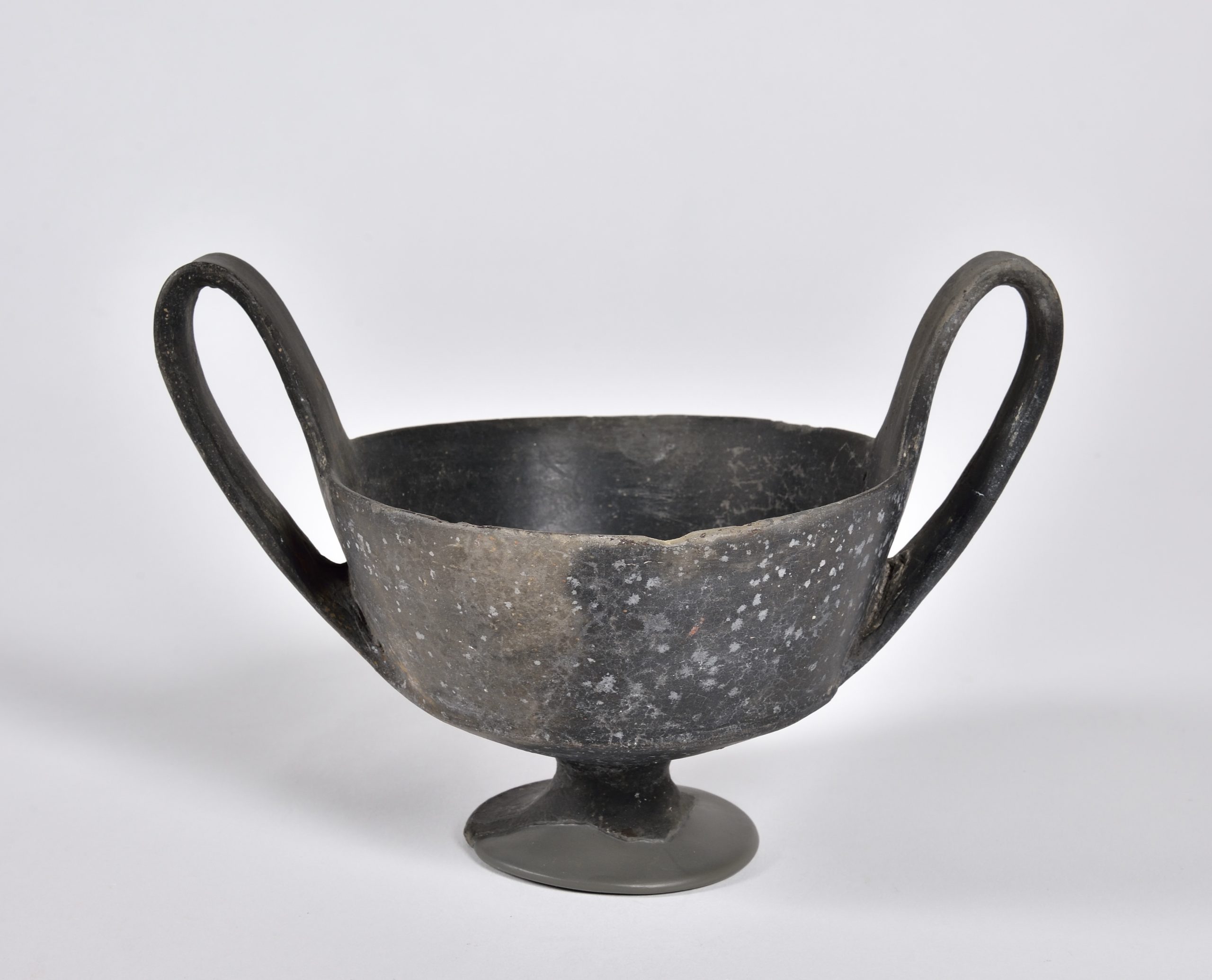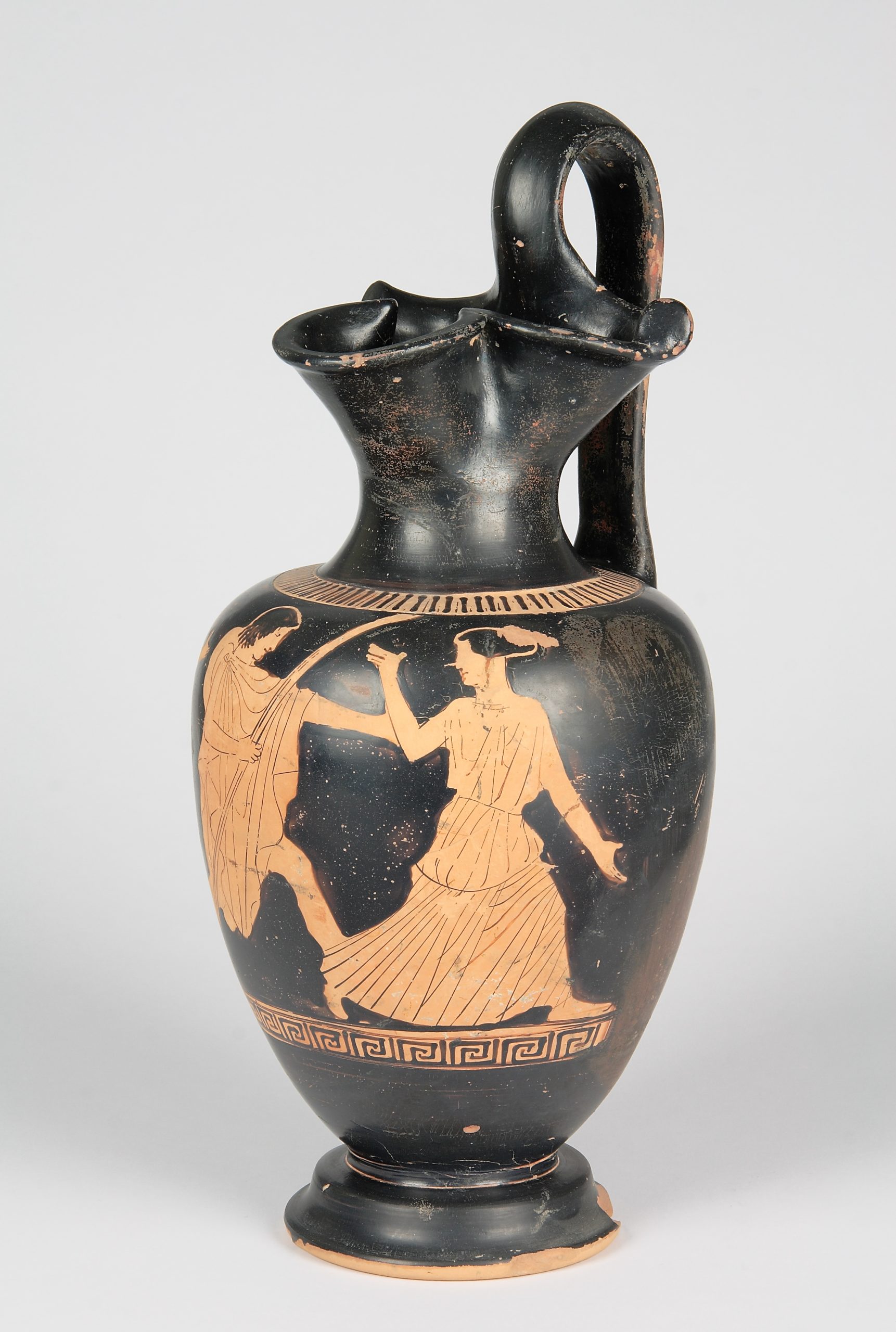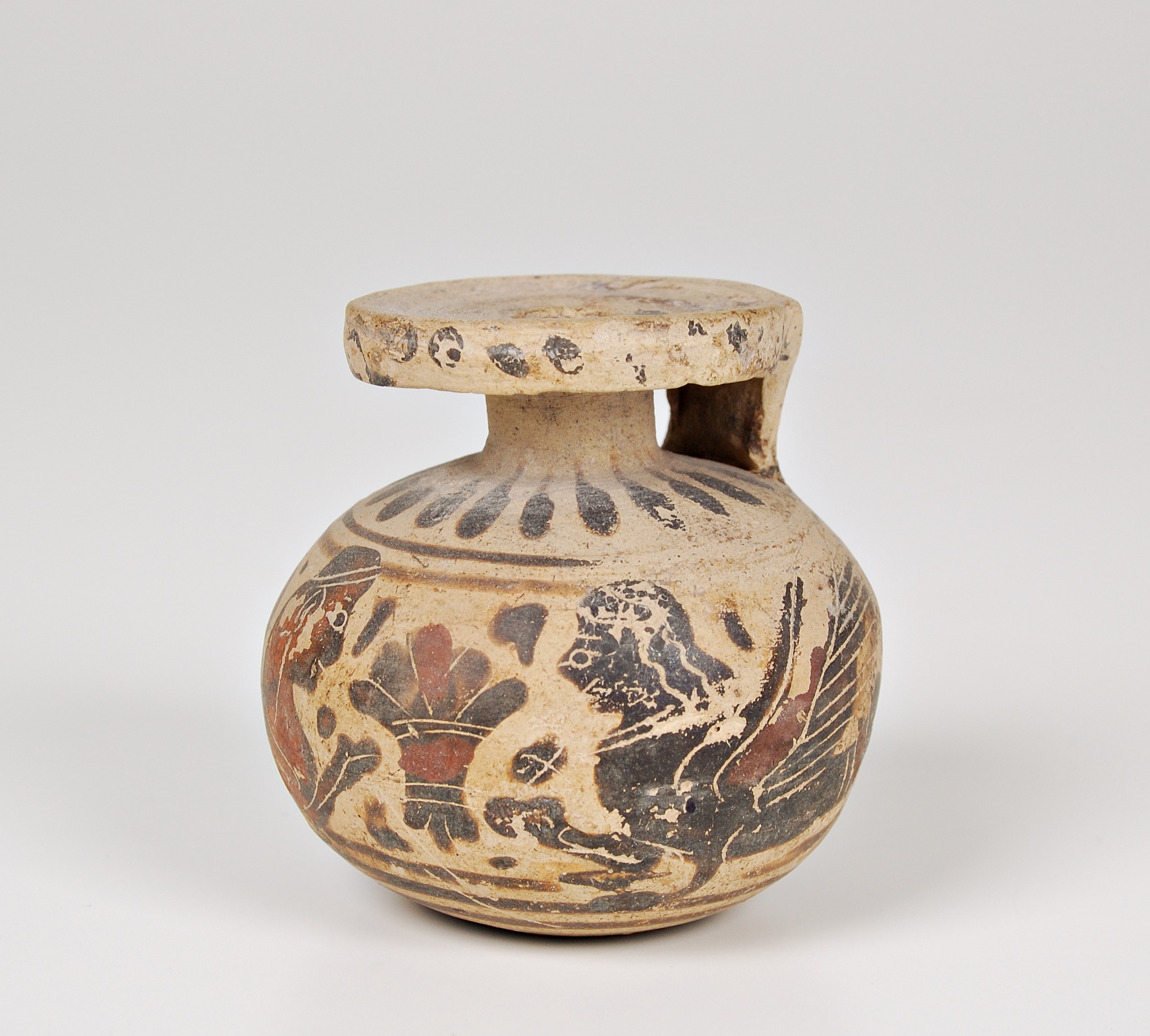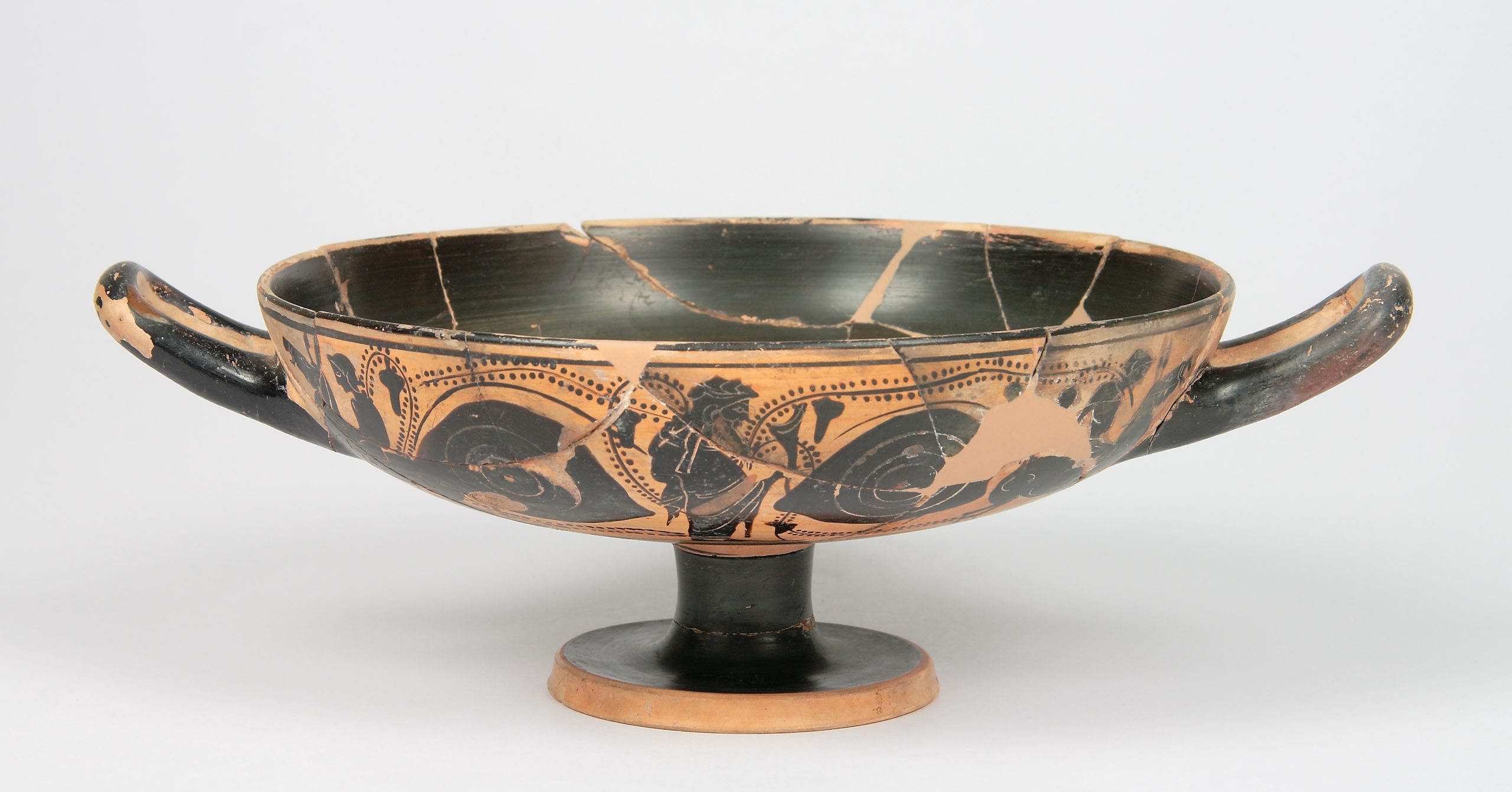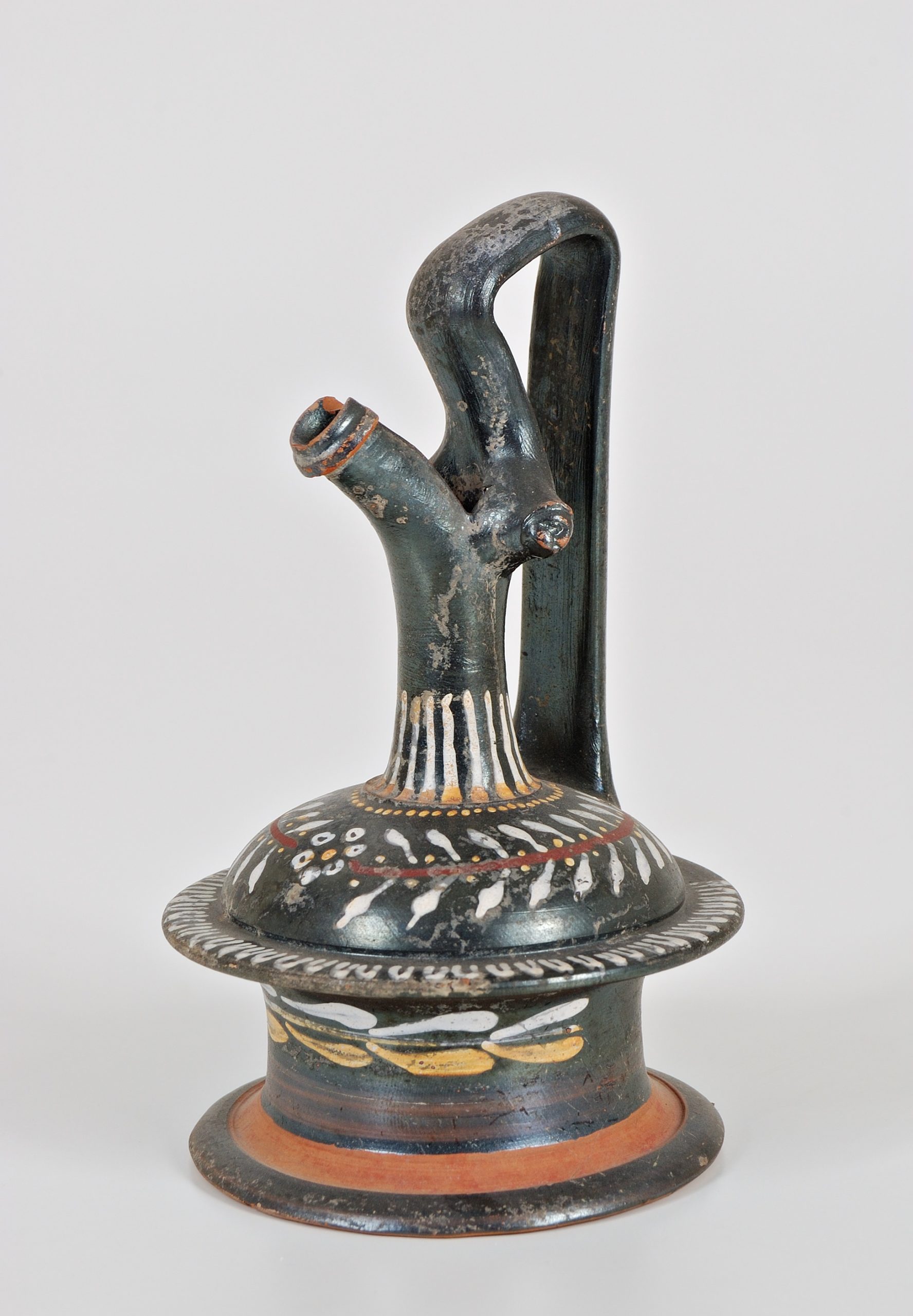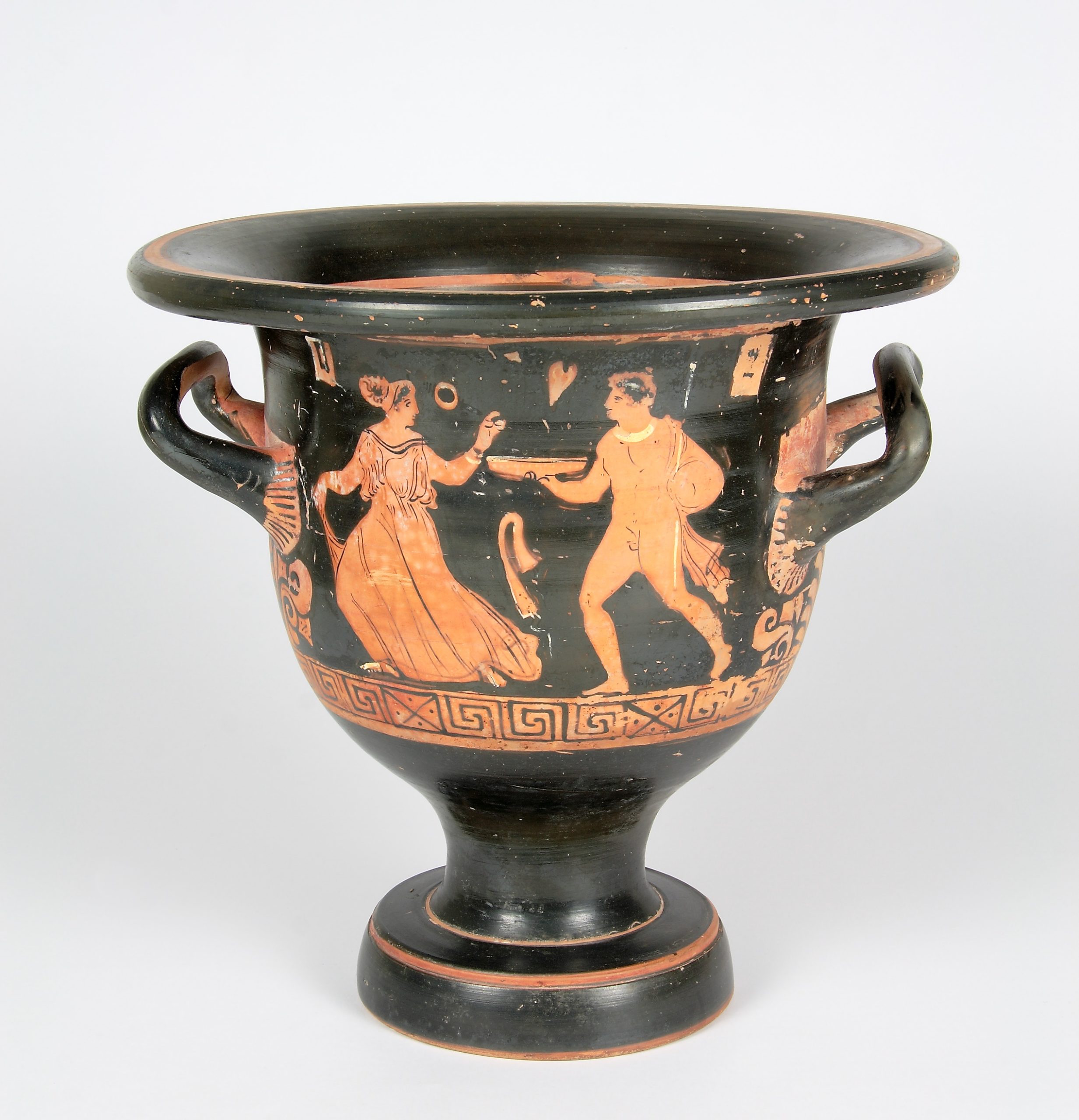This gallery shows a large number of objects from the Mediterranean basin, chronologically dating from the Bronze Age (3400 BC – 600 BC) to the Roman period (753 BC – 476 AD).
Important are the Attic ceramics, the production of which began around the 7th century BC, first with theecoration with black figures, replaced from about 530 B.C. by the red figure technique, decorations obtained through a complex technique based on several firings in both oxidizing and reducing (oxygen-free) atmospheres. The technique was a real revolution for the time and gave Athens absolute artistic dominance and prestige, with rich exports to the western market.
Well represented are the Etruscan bucchero works, shiny black ceramics (they look like metal) obtained through a special firing process in an oxygen-free environment, dating back to the 7th century BC and located in the area of Cerveteri in Latium, refined productions dedicated to the symposium of the aristocratic classes.
Various Roman tableware ceramics and large containers used for trade describe the everyday life, culture and civilisations of Ancient Rome, their decorative and production techniques and trade in the Mediterranean.
After more than two decades, the exhibition was significantly revised in 2023, as much in its educational content and selection of artifacts as in its layout. The updating of artifacts brings to the exhibition a significant core of objects from the deposits (15 percent for the Classical section and 37 percent for the Roman section), which are presented to the public for the first time after a thorough review of their state of preservation.
The part devoted to the ceramics of Greece and Italy in classical antiquity is in continuity with the previous one, reorganizing the showcases on the basis of four major cultural-historical thematic areas and offering some insights.
While the existing display of Roman ceramics was complemented by a selection of artifacts from Faenza excavations. An important enrichment of the Roman selection concerns the possibility of exhibiting a portion of the extensive floor mosaic found in 1971-1972 during the archaeological excavation of the domus in Via Dogana in Faenza, which is currently stored in the Soprintendenza’s deposits at Palazzo Mazzolani in Faenza.

